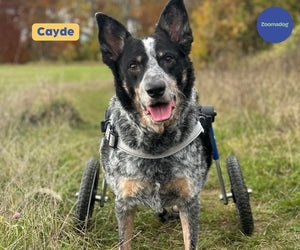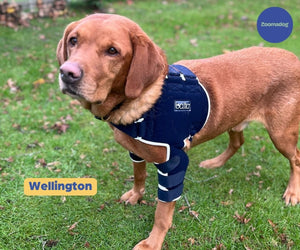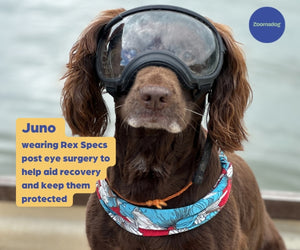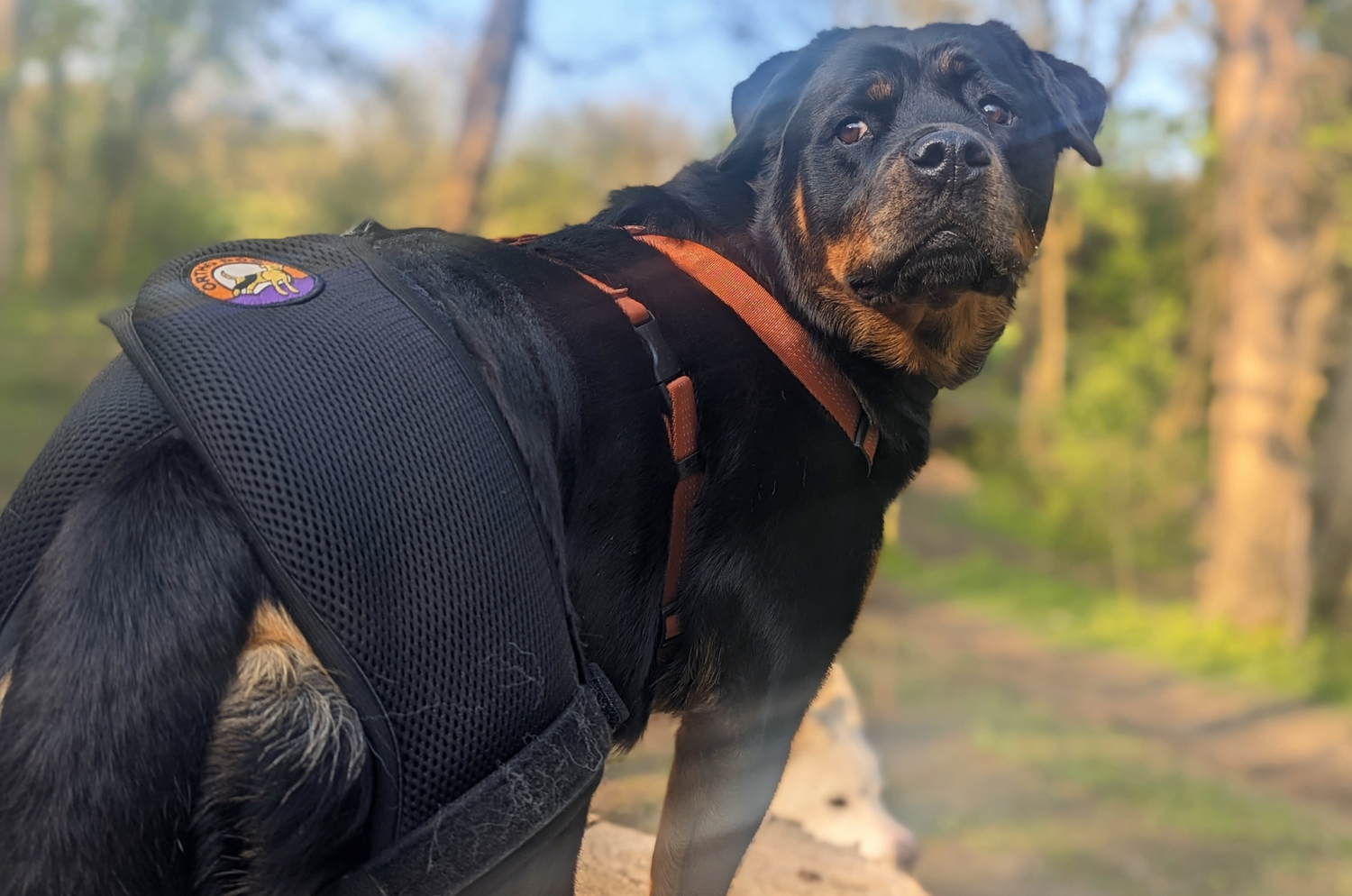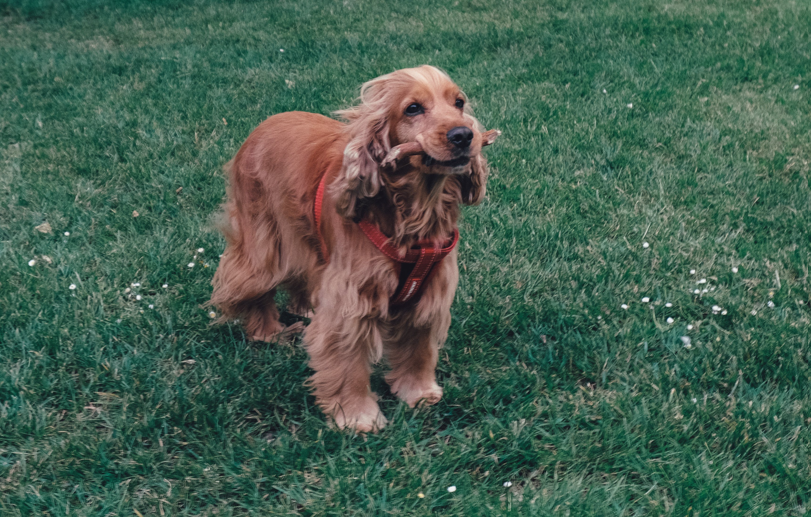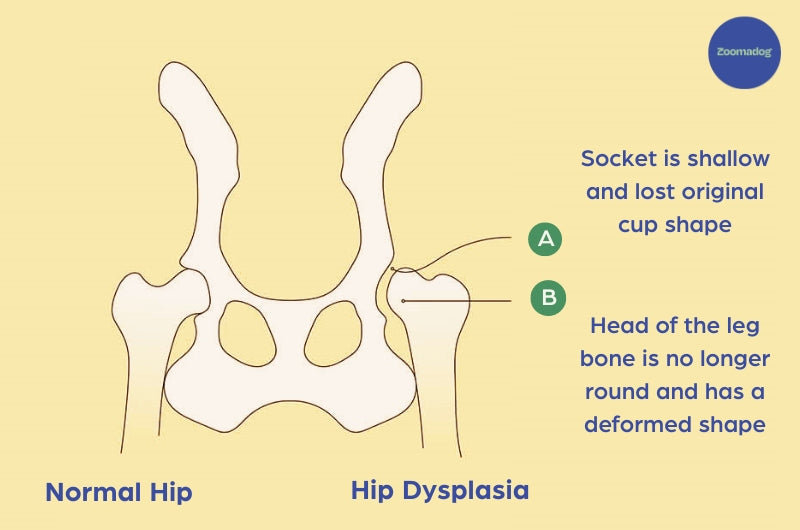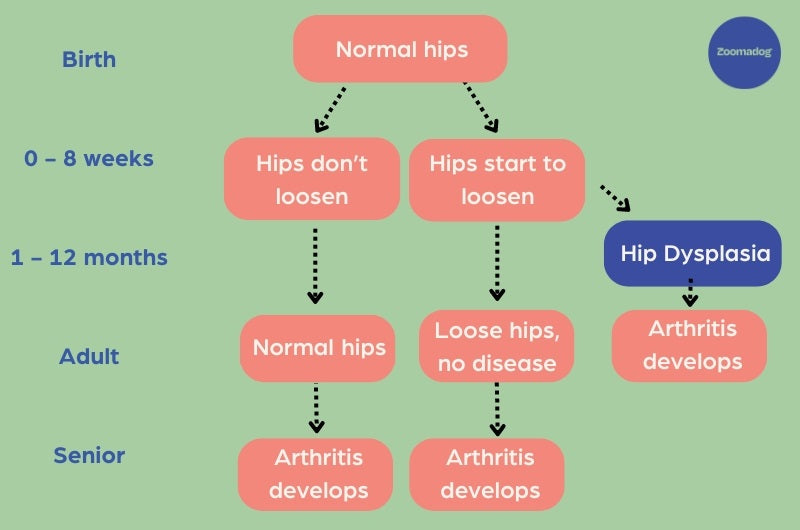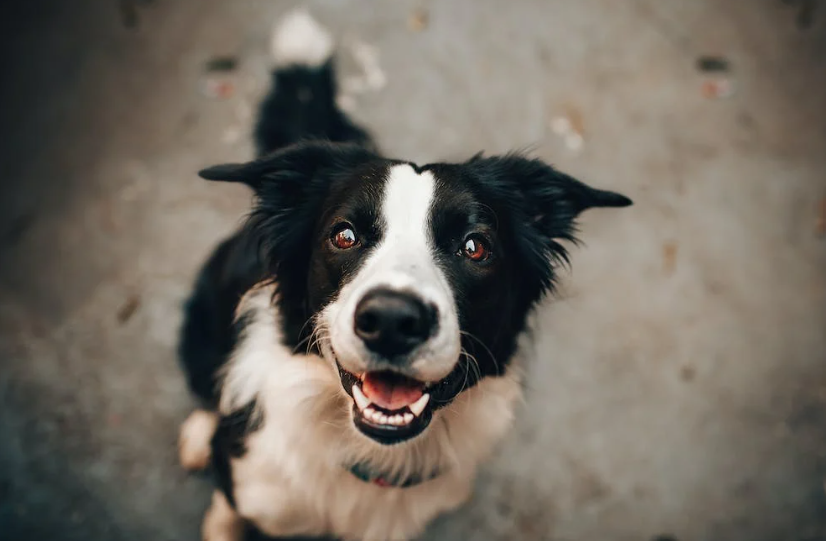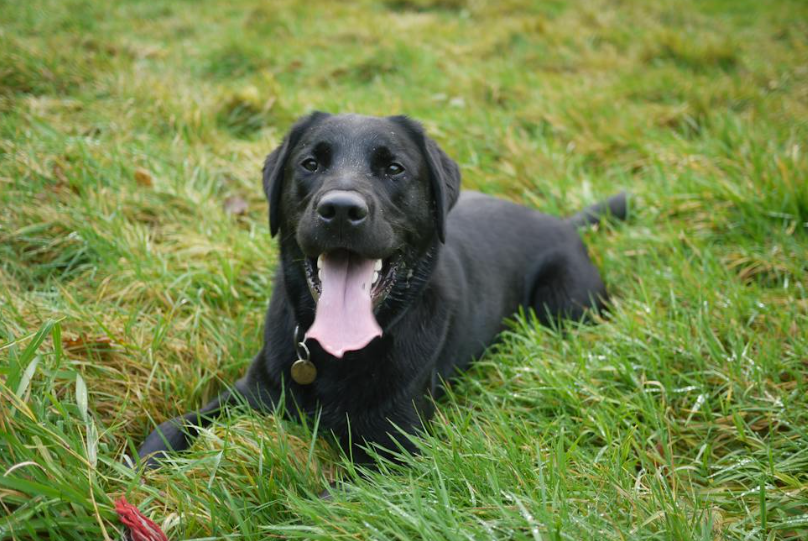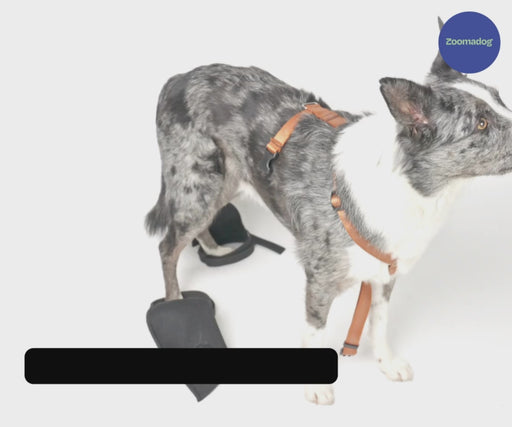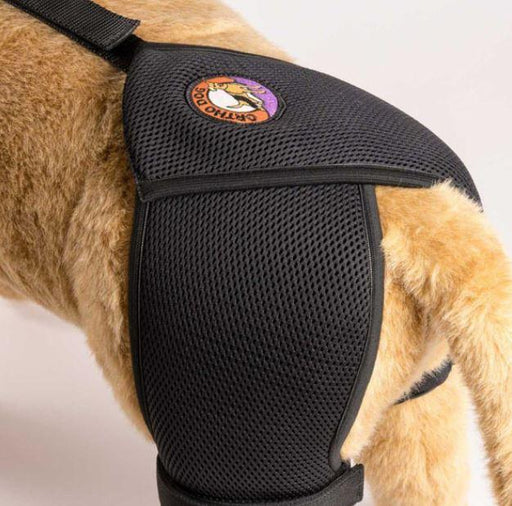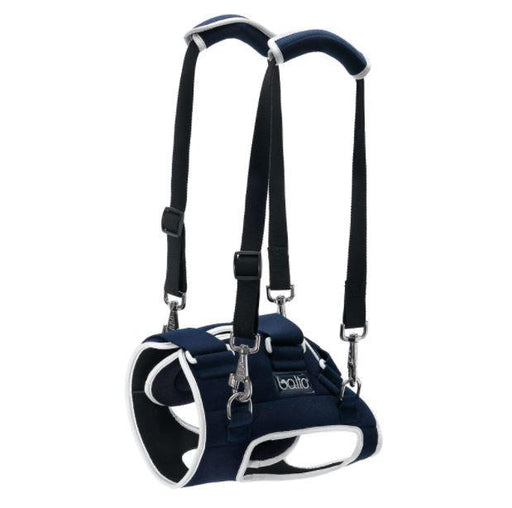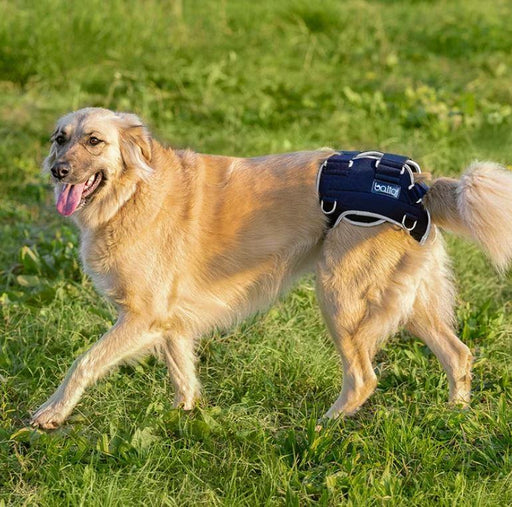Dog Hip Dysplasia
The hip joint is a ‘ball and socket’ joint, this normally fits together perfectly to enable easy and smooth movement. However, when a dog has hip dysplasia their ball joint (head of the femur) and socket joint (socket of the pelvis) have developed incorrectly and don’t fit together as they should. It may be that the socket is too shallow or the ball is not fully formed or a combination of the two, meaning the joint is too loose.
This in turn causes the joint to be unstable and move excessively, leading to pain, swelling and inevitably arthritis. Hip dysplasia can occur in any dog; however it is most commonly seen in larger, pedigree breeds such as Labradors, Rottweilers and German Shepherds although it can also affect smaller dog breeds such as Pugs and French Bulldogs.
Some dogs respond very well to non-surgical treatments through weight, controlled exercise, and a hip brace. If your dog improves with treatment, it’s possible for them to live a long and happy life.



